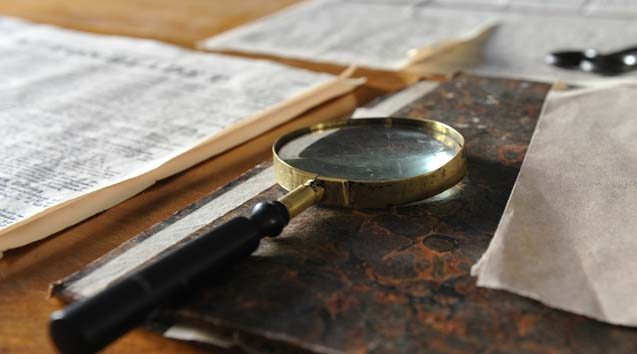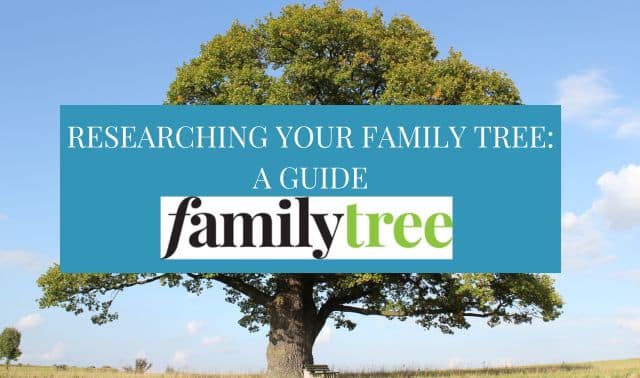Many of today’s drivers rely on GPS technology to get from place to place. GPS units—global positioning systems—calculate the best routes and give step-by-step directions, even in unfamiliar territory. They advise you where to stop for lunch and instantly recalculate the route when you miss a turn.
Another type of GPS can guide your family history journey. The Genealogical Proof Standard serves as a “genealogical GPS” that teaches basic navigational skills: how to plot your research course, track your progress, read conflicting sets of directions, and share your journey with friends and family.
Once you’ve navigated your research path with genealogical GPS, you won’t want to be without it. And you might as well learn from the best—what follows are testimonies from three expert genealogists as they handle the twists, turns and potholes of genealogy research using the Genealogical Proof Standard.
What is the Genealogical Proof Standard?
The Genealogical Proof Standard (your “Genealogical GPS”) gives you “rules for the road” to make your research journey less risky and, eventually, more rewarding. Just as it’s not always fun to drive within the speed limit, the GPS isn’t built for thrills. Instead, it emphasizes the long-term joys of the journey: the unfolding scenery, time spent with ancestral traveling companions, and a safe and satisfying arrival at your destination.
The Board for Certification of Genealogists developed the Genealogical Proof Standard (GPS) in the 1990s to help researchers navigate the newly constructed information highway. “The internet was booming and we faced old challenges in a new sense,” says renowned genealogy scholar and author Elizabeth Shown Mills. “There’s always been a problem of people not understanding what they found and passing it around, but the introduction of the internet exploded those negative consequences. … People coming into the field were overwhelmed by all they found. They needed a test they could pose.”
The GPS filled the bill, Mills explains, by offering a way to measure the reliability of all family tree data—whether found online or not. If the information doesn’t meet the five coordinates of genealogy’s GPS, you’re likely not to be in the place you think you are. Instead, you may have found incorrect information or even be tracing the wrong ancestors.
The sections that follow describe the key principles of GPS, and why they’re important for your research.

1. Reasonably Exhaustive Research
The first criterion of the GPS is “thorough research,” Mills says. But what’s thorough? How many mile markers do you need along your ancestor’s life path to consider it sufficiently scenic? How much proof do you need that the genealogical information you’ve discovered is accurate?
Thorough research is “reasonably exhaustive,” says Sherry Stevens, a 30-plus-year research veteran in Utah. But that doesn’t mean you have to get exhausted. “It just means you should check as many records about your ancestor as possible. You never know which one might hold the clue you need.”
Finding multiple sources for a single piece of information, such as a birthplace, is key. “If you look at just one source, you won’t see that there’s more than one possibility for what happened,” Mills adds. “We know that when there are multiple eyewitnesses to an event, the accounts differ. In historical research, there’s no such thing as the final answer. All we can do is gather the best evidence possible and make a decision.” The more sources you can find for a piece of information about your ancestor, the better.
For example, sources for a couple’s marriage date might include marriage licenses, banns, bonds or contracts, church records, wedding invitations, newspaper announcements and more. The date you find in each source should be the same or similar.
A genealogy guide can tell you about the kinds of sources that exist for a given piece of information. For beginners, check out Beginner’s Guide to Genealogy (Family Tree Magazine) and for more advanced genealogists, The Researcher’s Guide to American Genealogy by Val D. Greenwood (Genealogical Publishing Co.).
When do you call it quits? “Professionals are usually limited by the financial resources of their clients, but a hobbyist never has to quit,” Stevens says. “There’s always another record to search. Often you’re limited only by the types of records you know about, so the trick is to keep learning, because the information you need is usually out there—somewhere.”
Time, money and competing interests will likely put the brakes on your research at some point, observes Paula Stuart-Warren, a professional genealogist in Minnesota. “Maybe the only material that holds your answer is five states away and your budget doesn’t allow you to get there or hire someone, so you’ve reached a natural resting point on this family for the time being.”
Here’s where organization is important: If you can keep track of where that potential source is and how to access it, you’ll be able to easily pick up your research when life allows.
2. Complete and Accurate Citations
Documenting a journey means keeping track of where you’ve been and what you learned on the way. The second rule of genealogical GPS speaks to this: It requires keeping track of sources and citing them accurately. That means identifying where you found each piece of information and logging what you’d need to know to find that source again. Follow these tips to help you keep track of sources:
- Download and/or print copies of genealogical data you find online. Note the URL, date you accessed it, the website title and (if known) owner, and information author, along with the usual information about the source itself (such as the volume and page number of a digitized deed and the name of the county office that created it). You never know when web pages or their content will move or disappear.
- Copy the title page and write on it any other pertinent publication information (such as the volume and page numbers you copied) when making copies from a book. Note the condition of each source (missing pages, an incomplete index, blurry microfilm) and how you used it. Did you review images of records? Keyword-search a database?
- Keep your files together: photocopies, digitized images or online index results and your notes about them.
- Consider using bibliographic software such as Evernote or Zotero as your personal card catalog: a place to keep all your source citation information. When it’s time to write up your research, you can easily dump reference information into footnotes without having to retype it.
Why go to all this trouble? “We should cite our sources for a very selfish reason—to keep ourselves straight,” says Mills. “If we don’t know where information came from, how do we know whether it’s trustworthy? Each time we cite a source, we need to think about what we are gathering and whether its information applies to our person. For every ‘fact’ we gather, we need to consider why we are accepting it as ‘fact.’ What is there about this source that makes it credible?”
Citing sources also assures others—not only your family’s future genealogists, but also anyone with whom you share your tree—that your information is reliable. “You need to guide others to the same source you found, so they won’t need to redo your research,” Stevens says. “That means providing all the details needed for them to find the same record.”
“If following a standard [citation] format is intimidating, remember that the format is flexible,” Stevens adds—especially if you don’t plan to publish your research in a genealogical journal. She outlines the necessary citation elements:
- Who: author who or agency that created the record
- What: title of the document
- When: date the record was created
- Where: place and publisher, volume, page number, etc.
- How: location where the record can be found
“You also may want to include notes as to why the record is useful or what you learned from it,” Stevens says.
Even these experts have tricks to help them remember, for example, whether the “author” of the 1920 census record naming Aunt Sally is the enumerator, the US Census Bureau or Ancestry.com. Stuart-Warren pastes sample citations for various records—such as census returns, birth certificates, family letters and online indexes—into a word-processing program and modifies them as needed.
3. Thorough Analysis and Correlation
At some point in your journey, you’ll take stock of where your research road has taken you, with all its detours, fender-benders and apparent dead ends. Again, genealogical GPS is there to guide you with its third and fourth principles on analyzing data and resolving contradicting family information.
“Compare and contrast the details [in records you find], and resolve the conflicts when something doesn’t fit,” says Mills. The process, she notes in Evidence Explained (Genealogical Publishing Co.), requires genealogists to continually pit their sources against each other, weighing their reliability and credibility. Family historians test theories and gradually build solid conclusions based on thorough research in high-quality sources that were created separately, or independent of each other.
How do you manage this process of analysis? “I love to do timelines,” Stuart-Warren says. “A timeline gives you a great overview of what you’re doing. How else will you know when they arrived and left, and when and where to look for records?” Her timelines include ancestors’ life events and historical happenings plus events related to records she’s using, such as the date of a courthouse fire.
Creating an abstract of each record is another analysis trick that helps you put important data in at-a-glance form. “Abstracting is simply gleaning out all the important details from a source,” Stuart-Warren explains. “Let’s say I was reading an obituary. If it names a church, the cemetery, people who attended and where they were from—all that is important.” You could put your abstracted data on index cards, in list form, or in your genealogy software, depending on how you like to organize and review your research material.
Stuart-Warren types up hard-to-read documents. The resulting “typescript” is a word-for-word transcript of all the data (as opposed to an abstract, which pulls out just the highlights). “Typescripts are easier to read,” she says. “You’ll get the information more ingrained in your mind.”
4. Resolution of Conflicting Evidence
Finding conflicting information, such as two marriage dates for a couple, can throw a pothole into your genealogical travels. How do you know which (if any) date is right? “I look at each piece of evidence again,” Stevens says. “I weigh it like this: An original source is usually stronger than one that was derived from another source. Information recorded at or near the time of the event is usually stronger than information recorded sometime afterward. Direct evidence, which directly states a fact, usually carries more weight than indirect evidence, which only implies a fact.”
Unfortunately, if conflicts pop up, your research may require a U-turn. You may discover you’ve traced a same-named couple not actually related to you, or the evidence is inconclusive. “If I’m still unsure of the answer after weighing the evidence,” Stephens says, “I try to find more records to help resolve the conflict.”
5. Soundly Written Conclusion Based on the Strongest Evidence
You’ll eventually want to pause in your research journey and prepare the proverbial slide show—in this case, a report of your family tree findings. The final genealogical GPS coordinate calls for a well-reasoned, detailed, documented writeup.
Find a realistic way to share what you’ve discovered so far—you may never have the time to write the 700-page family history opus of your dreams. “Get [your research] into print or online,” encourages Stuart-Warren. “That doesn’t mean you can’t continue researching. But lay the groundwork: Get something done. You need to be a good archivist of what you already have.”
Stevens starts writing as she’s researching. “Writing helps you organize your thoughts about the information you have. It helps to decide what you know and what you still need to know. It helps you think of what the next step might be and what records you might use.”
Many family historians want to write a simple narrative for their families, one without documentation. They worry that mentioning sources and conflicting evidence will confuse or (worse) bore non-genealogists.
Why not do it both ways? “Each style has a different readership, a different purpose,” Mills points out. “If you’re telling the story about your family moving out to Pottawattamie County, Iowa, and building a sod house, tell it one way for your family, but send the local society’s magazine something that presents the evidence. Or on your website, present the story on one page, and on another page, put your reasoning.”
Other authors put research notes and/or source lists at the end of the narrative instead of within the text or at the bottom the page, insert images of original documents as their sources, and weave evidence into the story without belaboring every detail of how they arrived at their conclusions.
But even if you’re “just” writing for your family, don’t cop out on doing it right. Make sure your research is thorough and your reasoning and source information are available to those who ask about it. “Our families deserve an accurate family history,” Mills says. And your attention to the evidence will increase your family’s confidence in your findings and lay groundwork for future researchers.
The Benefits of GPS
Obeying the rules of the road gets you to your destination without problems such as accidents and speeding tickets. Likewise, genealogical GPS helps smooth your research travels. “The technological GPS lets us know exactly where we stand. So does the genealogical GPS,” Mills says. “As genealogists, if any of our GPS coordinates are off the mark, we’re likely not to be where we think we are.” A mistake early in the journey—veering a few degrees off our mark—will be magnified the further you go in the wrong direction.
Using genealogical GPS rewards you with confidence in your research findings along the way, as well as in the family story you’ve put together once you reach your destination. “When you’ve finished [your ancestors’] stories, you’ve created something that will last for generations—something that will be saved and cherished,” Stevens says.
Toolkit
Research and Analysis
- The Board for Certification of Genealogist: Ethics and Standards
- Genealogical Proof Standard, 3rd edition by Christine Rose (CR Publications)
- Genealogy Standards, 2nd edition by the Board for Certification of Genealogists (self-published)
- The Researcher’s Guide to American Genealogy by Val D. Greenwood (Genealogical Publishing Co.)
Source Citation
- Evidence Explained, 4th edition (e-book only) by Elizabeth Shown Mills (Genealogical Publishing Co.)
- Evidence! Citation and Analysis for the Family Historian by Elizabeth Shown Mills (Genealogical Publishing Co.)
- QuickSheets: Citing Online Historical Resources by Elizabeth Shown Mills (Genealogical Publishing Co.)
Writing
- You Can Write Your Family History by Sharon DeBartolo Carmack (Genealogical Publishing Co.)
Related Reads
A version of this article appeared in the October/November 2012 issue of Family Tree Magazine. Last updated: May 2025
FamilyTreeMagazine.com is a participant in the Amazon Services LLC Associates Program, an affiliate advertising program designed to provide a means for sites to earn advertising fees by advertising and linking to Amazon.com and affiliated websites. Family Tree is also a participant in an affiliates program through Genealogical Publishing Co.











